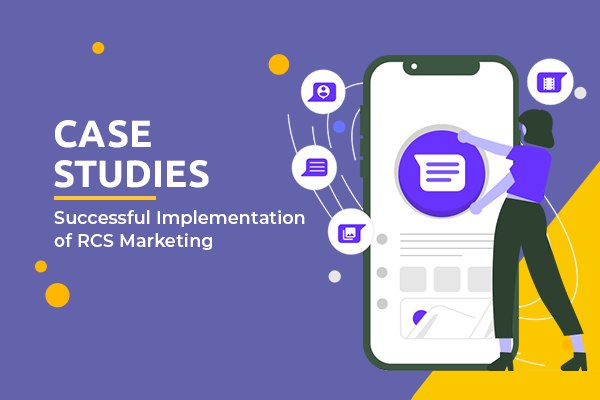Digital Marketing 101: Why, What, & How
- March 21, 2024
- Digital Marketing
There are literally millions of businesses in today’s global marketplace. Big or small, all companies need to fight for a place in the hearts and minds of their target groups (TG). Digital platforms have made it possible for clever marketers to establish a robust connection with their TGs like never before.
It’s not too far off to consider a strong online presence the foundation for all brand-building efforts, especially for new companies. Let us offer you a bird’s eye view of this dynamic world of online or Digital Marketing.
In our 15+ years of marketing experience, we’ve seen countless businesses come and go, yet one thing is for sure: A business owner needs to get involved in their Digital Marketing efforts to ensure the apt delivery of their message’s promise.
Let this broad overview serve as a guide so that you can start thinking about your business in the best marketing terms possible, and build a bridge to success from where you stand.
The Who: Understanding Your Audience
The cornerstone of any successful digital marketing strategy is a deep understanding of your audience. Identifying the demographic, psychographic, and behavioral characteristics of your target market is crucial.
For instance, a luxury watch brand targeting affluent professionals would tailor its digital marketing efforts towards platforms frequented by this demographic, such as LinkedIn, and use messaging that resonates with their aspirations and lifestyle.
The What: Components of Digital Marketing
Digital marketing is an umbrella term that encompasses various strategies and channels through which businesses can promote their products or services online. Some of the key components include:
- Search Engine Optimization (SEO): Improving your website’s ranking on search engines to increase organic traffic. For example, a local restaurant in Mumbai could use SEO to appear at the top of search results for “best seafood restaurant in Mumbai.”
- Content Marketing: This is at the heart of connecting with your target groups. It’s about creating and sharing valuable content that attracts and engages your clearly defined audience. A tech startup could publish blog posts on the latest trends in artificial intelligence to establish thought leadership.
- Social Media Marketing: Utilizing platforms like Facebook, Instagram, and Twitter to build brand awareness and engage with customers. A fashion retailer could use Instagram to showcase their latest collections and engage with fashion enthusiasts.
- Pay-Per-Click (PPC) Advertising: Running ads on search engines and other platforms, where you pay each time someone clicks on your ad. This is effective for immediate visibility and targeted campaigns.
- Email Marketing: Sending personalized emails to a list of subscribers to nurture leads and promote offerings. An online education platform might send a series of educational emails about digital marketing courses to interested subscribers.
The Why: Objectives of Digital Marketing
The ultimate goal of digital marketing is to achieve business objectives through digital channels. These objectives may include:
- Increasing Brand Awareness: Make more people aware of your brand, its products, or services. Digital Marketing allows you to reach a broad audience efficiently.
- Generating Leads: Capturing interest in your products or services for the purpose of developing a sales pipeline.
- Driving Sales: Directly promoting your products or services to drive online or in-store sales.
- Enhancing Customer Engagement: Building and maintaining a relationship with your customers through regular interaction and quality content.
- Improving Customer Loyalty: Encouraging repeat business from existing customers through rewards, personalized communication, and loyalty programs.
The How: Implementing Digital Marketing Strategies
Implementing a successful digital marketing strategy involves a mix of the right channels, targeting, content, and measurement. Here’s how Proactive Digital approaches the task:
- Identify Your Goals: Clearly define what you want to achieve with your digital marketing efforts. Do you want to increase your brand awareness, generate leads, or retain existing customers? Your goals will dictate your strategy.
- Understand Your Audience: Create detailed buyer personas to understand the needs, preferences, and behavior of your target audience. That’s how you decide your content strategy and select platforms.
- Select the Right Channels: Depending on your audience and goals, choose the most effective channels to focus on. It might be SEO, social media, email marketing, or a combination of several strategies.
- Create Compelling Content: Develop content that resonates with your audience and drives them to take action. Whether it’s informative blog posts, engaging social media content, or persuasive ad copy, make sure it aligns with your brand voice and objectives.
- Measure and Optimize: Use analytics tools to track the performance of your digital marketing activities. Analyze the data to understand what’s working and what’s not, and make adjustments to improve your results.
Some Examples
Let’s look at some successful digital marketing campaigns:
- SEO Success Story: A boutique hotel in Goa used SEO to target keywords related to “luxury stays in Goa” and managed to double its organic traffic within six months, leading to a significant increase in bookings.
- Social Media Triumph: A new cosmetics brand used influencer marketing on Instagram to reach its target audience, resulting in a 20% increase in sales within the first quarter of launch.
- Email Marketing Excellence: An online bookstore implemented a segmented email marketing strategy to recommend books based on past purchases and browsing behavior, leading to a 30% uptick in repeat orders.
Conclusion
Even the most basic awareness of essential marketing concepts can transform how you manage the day-to-day operation of your business. This awareness definitely goes a long way to skyrocket the quality of your decisions and how they relate to your success.
Take these basic ideas of the audience, channels, aims, and strategies to heart and implement them in your business’s marketing. If you aren’t doing it already, the successful application of these concepts can revolutionize the success of your brand’s image.
For beginners starting their own business and new marketers, these few components are the 20% of the factors that affect 80% of the results.









